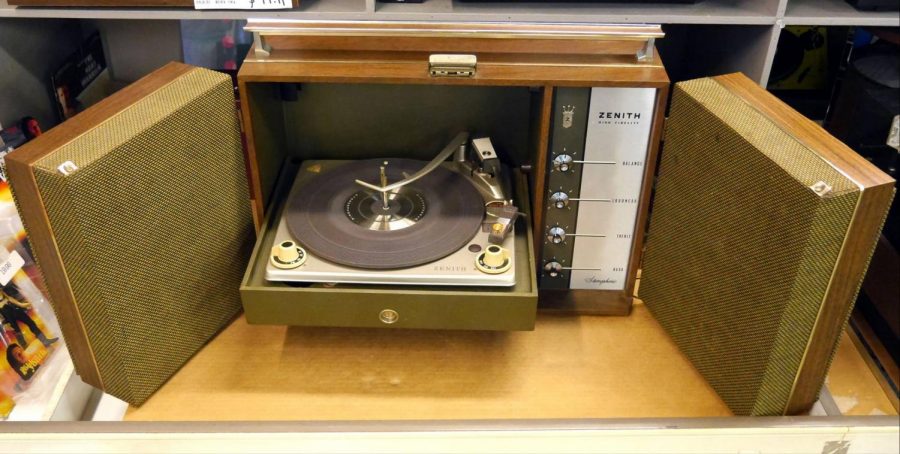The History of the Record Player
December 20, 2018
One of the most important inventions in the history of home entertainment is the record player. The record player has brought music into people’s homes for over a century. For many years it was thought as a long and dead technology.
Yet this relic, that was doomed to collecting dust in a basement or attic, has risen from the ashes to see the world once again. Record players have evolved across iterations, starting with the phonautograph, then to the turntable and reaching the modern vinyl version. Vinyl music has grown in popularity over the last decade. Others use their record players as a feeling of nostalgia. Now lets take a look back at the history of record players to make people better understand the roots of this interesting music technology.
The Beginning: The first version of the turntable was made by Edouard-Leon Scott de Martinville. He created the phonautograph in France 1857. Yet this device could not play sound back. The phonautograph was mainly used in lab settings.
The rise of the phonograph: Thomas Edison invented the phonograph in 1877. This device recorded and played sound. It inscribed audio to tinfoil wrapped along a cardboard cylinder for subsequent playback. Alexander Graham Bell added wax to Edison’s phonograph design in order to record waves of sound. The result was referred to as the graphophone.
Berliner’s Breakthrough: Emile Berliner took record players to the next level. He dubbed his creation the “gramophone” and secured a patent for the device in 1887. The gramophone was made of hard rubber and shelac before being constructed with vinyl. The gramophone is the basis of the contemporary record player. It grooves on flat discs instead of a cylinder. This is the point in time when records became necessary.
The Record Player goes Commercial: The first record player was released to the masses in 1895. This gramophone record player was quite popular until the rise of radio. Though radio didn’t kill the record player, it certainly stole the spotlight for a while. Record players sold well in the 30s and 40s but didn’t quite hit a mainstream tipping point until a couple decades later.
The Golden Age: Record players became really popular in the 60s and 70s when Dual released the first turntables to provide stereo playback. High-fidelity sound reproduction hit the scene and motivated a lot of people to add a record player to their home. The automatic high-fidelity turntable was an immediate hit in the early 60s. This was the golden age of record players. It was during this era that Electrohome released its famous space-aged Apollo Record Player along side their classic wooden stereo consoles.
A new use for the record player: Hip-hop DJs used record player turntables in a new and creative way through the 80s, 90s and beyond. They connected audio mixers to record players, guided their hands along the records so they scratched against the needle and produced a new rhythmic instrument of sorts. Though some people still use record players to play music, plenty of modern day hip-hop artists use record players in unison with mixers to add a rhythmic element to their music.
The Return of the Vinyl: After years of the vinyl industry being sustained by hardcore enthusiasts and niche music audiences, vinyl has come back into the mainstream. They are now being sold at major department stores like Urban Outfitters, grocery stores and even new independent record stores. Most major artists are now releasing their latest albums as LPs allowing generations young and old to experience this 100 year old technology in their homes today.
This increased interest in vinyl has resulted in a need for modern day record players. Many music enthusiasts or casual music listeners want to experience music on vinyl, while also wanting some more modern features such as USB recording, or connecting their smartphones and tablets to music systems so they can enjoy their entire music collection.

